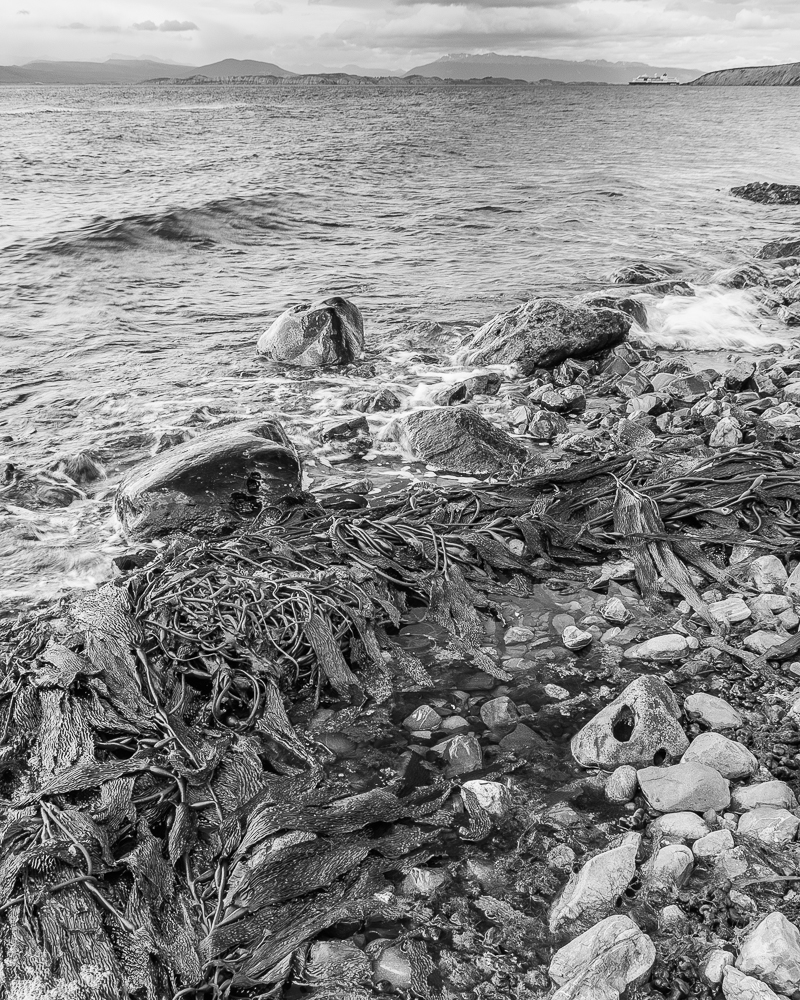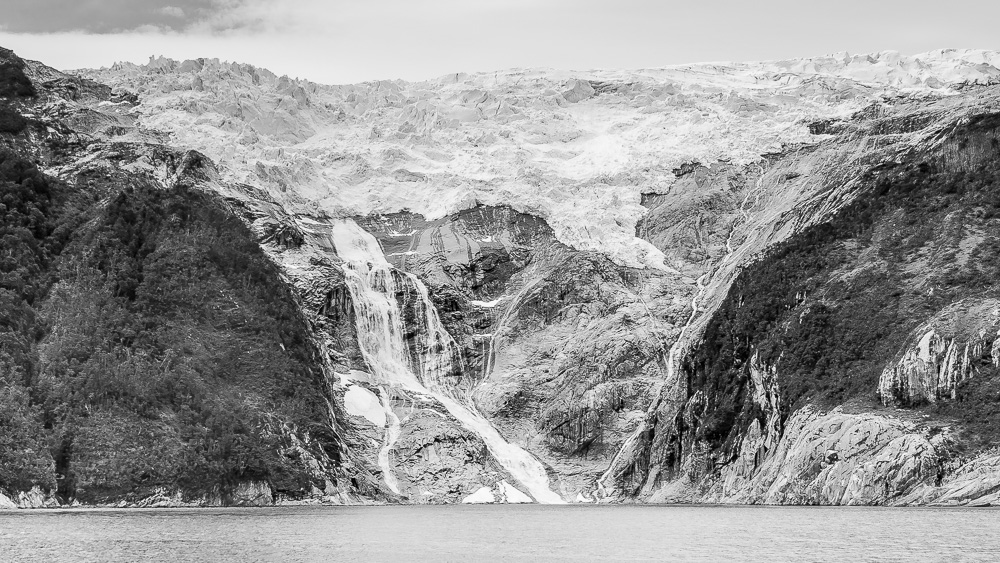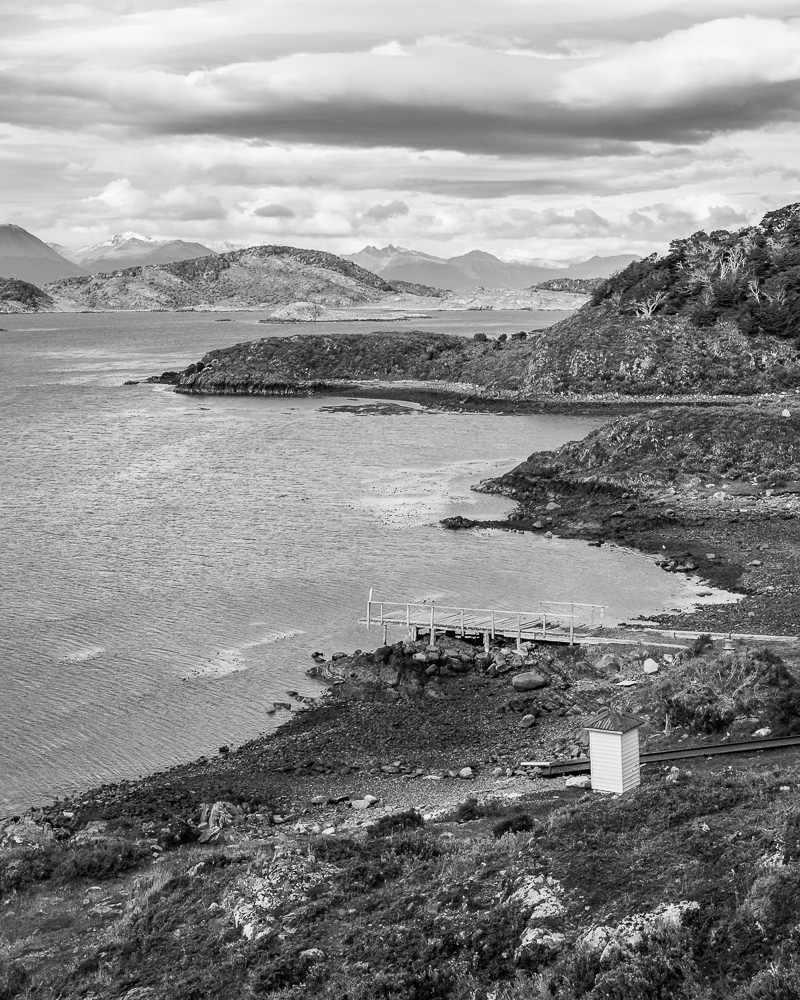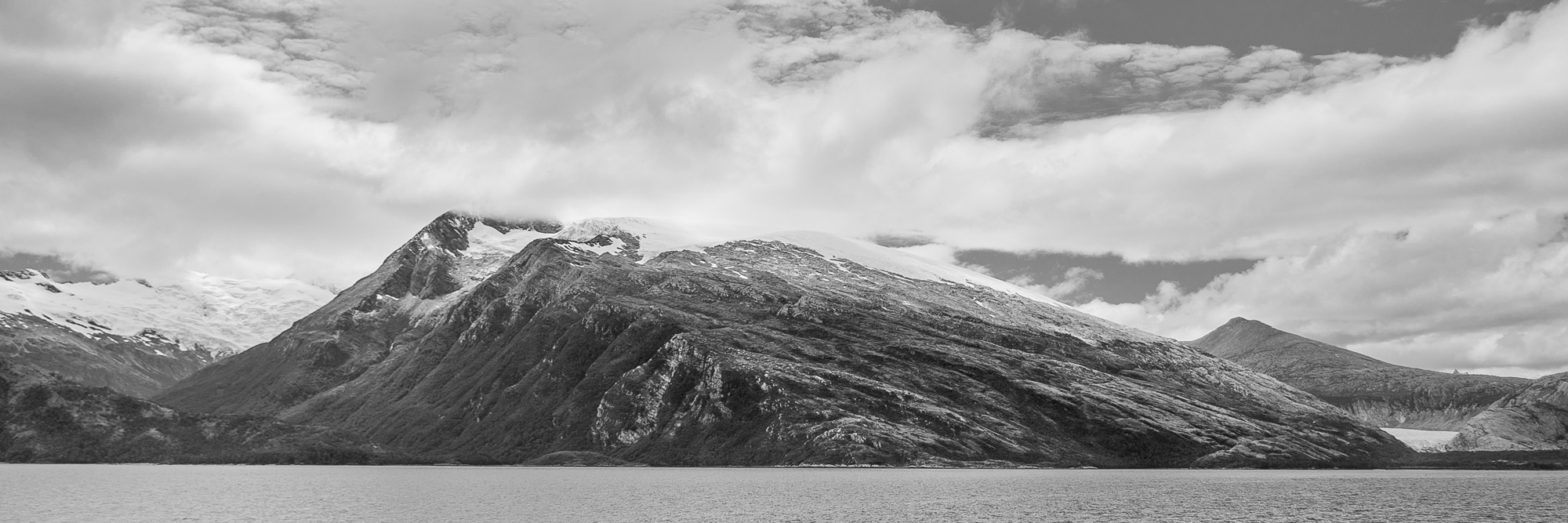Far, far south, at the tip of Latin America, some tens of thousands of years ago, the retreat of the massive Patagonian Ice Sheet began to expose the contours of the Strait of Magellan, separating Tierra del Fuego from the South American mainland. By the arrival of the first canoe people between 6,000 and 7,000 years ago, the extent of the ice — which would once have covered the entire tip of southern Chile — had already shrunk dramatically. Over the millennia that followed, the Yamana, or Yaghan — the world’s southernmost ethnic group, which once inhabited the Beagle Channel from the Brecknock Peninsula in the northeast, to Cape Horn in the southwest — adapted and evolved to live in reciprocity with this wild and unforgiving landscape, famous for the wrath and unpredictability of its seas. Yet all this would change in 1520, when the Portuguese explorer Ferdinand Magellan first set sight on the strait that would go on to bear his name. For the Yamana, the arrival of the European colonizers set off a chain of events that ultimately proved fatal. Today only one full-blooded Yaghan survives.
An unspoiled paradise until well into the nineteenth century, in less than two hundred years, Tierra del Fuego has seen its Indigenous inhabitants wiped out by colonization, and the effects of climate change now threaten the erosion of its glaciers. Perhaps unconnected at first sight, both processes — the retreating glaciers, on the one hand, and state-sponsored ethnocide, on the other — share their roots in the advent of our modern world, upsetting the finely tuned balance that allowed the region’s spectacular landscapes to evolve in a gradual process over many thousands of years, together with their peoples and ecosystems. With the Yaghan now all but gone, the glaciers are in danger of following in their footsteps.

The Yamana were a nomadic people whose main source of subsistence was the sea: Their diet revolved around the gathering of shellfish, such as mussels, whose shells were discarded in giant mounds, which can still be seen today at Bahía Mejillones on Navarino Island. This staple was supplemented by berries, eggs, sea birds, seals, and occasionally guanaco meat. They lived in small family groups, although from time to time, a beached whale would provide a feast around which a large number of Yamana would gather, lasting for as many days as there was good meat on the carcass. In the shadows of Euclase glaciers, they navigated the channels and fjords in bark canoes, whose workmanship was admired by early explorers. The English clergyman Francis Fletcher, who accompanied Sir Francis Drake on his journey around the world in 1578, described the vessels of the neighbouring Kawesqar as “fit for the pleasure of some great and noble personage, yea of some prince,” and a Dutch expedition in 1624 likened the Yamana’s crafts to the Venetian gondola. In the centre of their canoes was kept lit a fire, an image closely bound up with the lore of how Tierra del Fuego — or Fireland, as it was called by the Anglican missionaries — got its name.
Yet if the fine-tuned balance that had taken millennia to develop was disturbed by early encounters with these explorers, whose giant sail ships would appear sporadically on the horizon like floating islands, with the arrival of the Anglican missionaries at the end of the nineteenth century, it was shattered. Efforts to “civilize” the Yamana, described by a missionary in a letter to the Sheffield and Rotherham Independent in 1888 as “amongst the lowest types of humanity,” sought to render them sedentary and adapt them to agriculture, ultimately causing the loss of the specialized skills and technology that had ensured their survival in this hostile climate for thousands of years.
Where once the Yamana had smeared themselves with seal oil to provide an impermeable barrier to protect against the elements, the clothes inculcated by the missionaries soaked up the rainwater, leaving them prone to the chill of the fierce Fuegian winds. The Yamana were employed felling the trees on their land and the lumber was shipped to Port Stanley for sale. They were paid poorly and often in kind. And when Reverend Thomas Bridges completed his translation of Saint Luke’s gospel into their native tongue, the books were sold to the very people who had helped him build up his knowledge of the language for the princely sum of one shilling, so as, in the words of Bridges himself, “not to lessen their sense of value.”
Neighbouring groups like the Ona and the Haush were systematically exterminated: the former hunted down and killed for money by figures such as the notorious Scot Alexander McLennan, and the latter baited with poisoned seals deliberately left by sailors. However, for the Yamana, it was the epidemics that decimated the population. Starting in 1881, the group was ravaged by successive waves of tuberculosis (a disease that continued to blight the community as late as 2006), measles, typhoid, smallpox, and whooping cough, all brought by the settlers. The voracity of the epidemics was such that towards the end of the nineteenth century, it had earned the bay of Ushuaia the nickname Welapatux Waia (literally, the bay of great mortality). By the 1930s, an estimated 40 to 70 full-blooded Yaghan were all that remained, becoming just one after the death of Ursula Calderón in 2003.
A current motion in the Chilean senate aiming to officially recognize the genocide suffered by the original inhabitants of Tierra del Fuego is the latest episode in the history of the Chilean state’s confused relationship with the Yamana. It is a relationship whose interventions have often been instrumental in the loss of the Yaghan traditions and culture, including prohibitions on the use of bark canoes on safety grounds (seemingly oblivious to the fact that the Yamana had navigated the waters in these vessels for thousands of years), restrictions on the gathering of the shellfish and birds’ eggs that were once staples of the Yamana diet, and the partial restitution of Bahía Mejillones to the community in 1994 — following the transfer of the remaining Yaghan from Mejillones to Villa Ukika in the preceding decades — albeit with a series of restrictions on their use of the land.

Similarly, widespread discrimination against Indigenous peoples in Chilean society, alongside mestizo marriages and decades of monolingual Spanish-language education, have also taken their toll on efforts to preserve the Yamana language. Thomas Bridges — whose compendious 32,000-word volume Yámana-English: A dictionary of the speech of Tierra del Fuego remains the most comprehensive record of the Yaghan tongue — once described it as possessing “a list of words and a style of structure far surpassing that of other tribes far above them in the arts and comforts of life.” However, efforts to resuscitate the language, whose fate now effectively lies in the hands of its last remaining speaker, have been unsuccessful, despite the considerable yet arguably counterproductive interest created by the trope of the solitary life of the last speaker of the world’s southernmost tongue.
Words such as čöpalopi, defined by Bridges as “snow full of water, as when floating in water, […] masses of snow ready to cake together afloat on the water” hint at the relationship between the Yaghan and the subpolar climate. The importance of the ice is also clear from the few stories and legends that have survived. However, the sad fact is the true richness of this connection with the glaciers that dominate the fjords will probably never be known.
Like the Yamana, the glaciers of the eastern mountains of Tierra del Fuego are also facing extinction as the effects of climate change take their toll. Across from Navarino Island on the other side of the Beagle Channel, looking up at the shrinking Martial glacier from the Argentinean city of Ushuaia, it is hard to square the image of the virgin land on which the missionaries once erected the first fateful building with the city’s concrete sprawl. The scene is a stark reminder of the speed at which the landscapes of Tierra del Fuego have changed over the last century, the peoples of this remote archipelago decimated from within by the violence and arrogance of colonization and the glaciers eroded from without by the more insidious effects of climate change, which has a violence and arrogance all of its own.

In his recent book, Glaciares de Tierra del Fuego, Argentinean glaciologist Rodolfo Iturraspe conducted an extensive survey of research on the glaciers in the region. The findings are far from encouraging. In one of the most striking examples, Iturraspe uses sources dating back to the records of the Italian missionary and explorer Alberto de Agostini to reconstruct the retreat of the Marinelli glacier in the Cordillera Darwin during the last century. Of the 14.5 km lost since Agostini’s visit in 1913, the vast majority (9 km) disappeared between 1992 and 2010, with the glacier registering the fastest rate of retreat on record in South America during this period.
The development corresponds to broader trends in the shrinking of the Andean cryosphere: A recent study found that the extent of the ice in the tropical Andes has shrunk by 63 percent in the last 50 years, a trend Iturraspe sees as mirrored in parts of Tierra del Fuego. “A reconstruction of the surface of ice at the start of the Little Ice Age,” he explains, “shows that just 30 percent of the cover at the end of the nineteenth century remains, with the majority of this 70 percent loss occurring in the second half of the twentieth.” He is also keen to emphasize the complexity of the dynamics in the 2000-km² Cordillera Darwin icefield, where the thickness of the ice means losses in terms of area have been less pronounced. Nonetheless, in general terms the glaciers in the region continue to retreat, losing both mass and thickness, albeit with some exceptions: “Some of the Chilean glaciers that empty into the Beagle Channel, such as those of the Pia Fjord, are stable and have even advanced slightly.”
Favourable conditions during 2011–2015 provided some respite for the region’s cryosphere. However, a bad winter with little snowfall in 2016, followed by a warm spring and a summer marked by low levels of precipitation and the absence of cold spells, means that 2016–2017 has seen an end to this run. “We can see the glaciers have lost their protection of snow, leaving the ice exposed, with a significant loss of mass,” explains Iturraspe. “March marked the end of the [hydrological] year and we’re facing the prospect of a deficit the likes of which we haven’t seen for some time.”
Yet if the retreat of the glaciers is closely linked to the effects of climate change — a process whose most severe consequences are likely to emerge over a period of decades, if not centuries — for Iturraspe the region also faces urgent problems in the short term, particularly its largest settlement, Ushuaia, where immigration and tourism are putting pressure on the city’s water supply, sewage infrastructure, and power grid. “It’s not so much that we need to adapt to climate change but to the predatory capacity of human beings, to our capacity for intervention,” Iturraspe says. For all we worry about the effects of climate change, he notes, key ecosystems could disappear even before they materialize.
There is a bitter irony in the fact that the Yamana, whose way of life succeeded in maintaining a balance between the predatory capacity of the inhabitants of the land and the resources at their disposal, were ultimately displaced by incomers whose arrival was bound up with the advent of our modern world of unprecedented predatory capacity. Although the pattern is repeated across the continent, somehow, here the damage is clearer than elsewhere, as if distilled to its essence. Perhaps the reason lies in the sense of remoteness and isolation to be found at this latitude of the Earth. Or perhaps it is because — unlike Chile’s other Indigenous peoples, such as the Mapuche and the Aymara — the descendants of the Yaghan are deprived of a living culture: Their land, their language, and their traditions having been amputated by a tragedy that continues to unfold. Whatever the reason, the sense of irreparability is palpable. To come in search of the Yaghan is to confront a process of loss, to seek out the irretrievable from a land marked by the absence of those for whom its shores and waters, the majesty of its Celestine glaciers, were once synonymous with the abundance and security of an undiscovered paradise.
Talking to a member of the Yaghan community one afternoon in Villa Ukika about recent changes in the area, he evoked the great flood, when, according to Yaghan legend, angered by the disrespectful behaviour of the humans down below, the Ibis-woman Léxuwakipa caused it to snow so much that the earth became covered in ice. The ensuing meltwater flooded the land, rising implacably until the peaks of just five mountains were left, a few families clinging to safety as the waters swelled around them. “That’s what’s happening now,” he says. And as the glaciers retreat and the ice melts inexorably, I wonder if there is perhaps more than a grain of truth in what he says.

This article was first published in Earth Island Journal (2017).

Comments are closed.